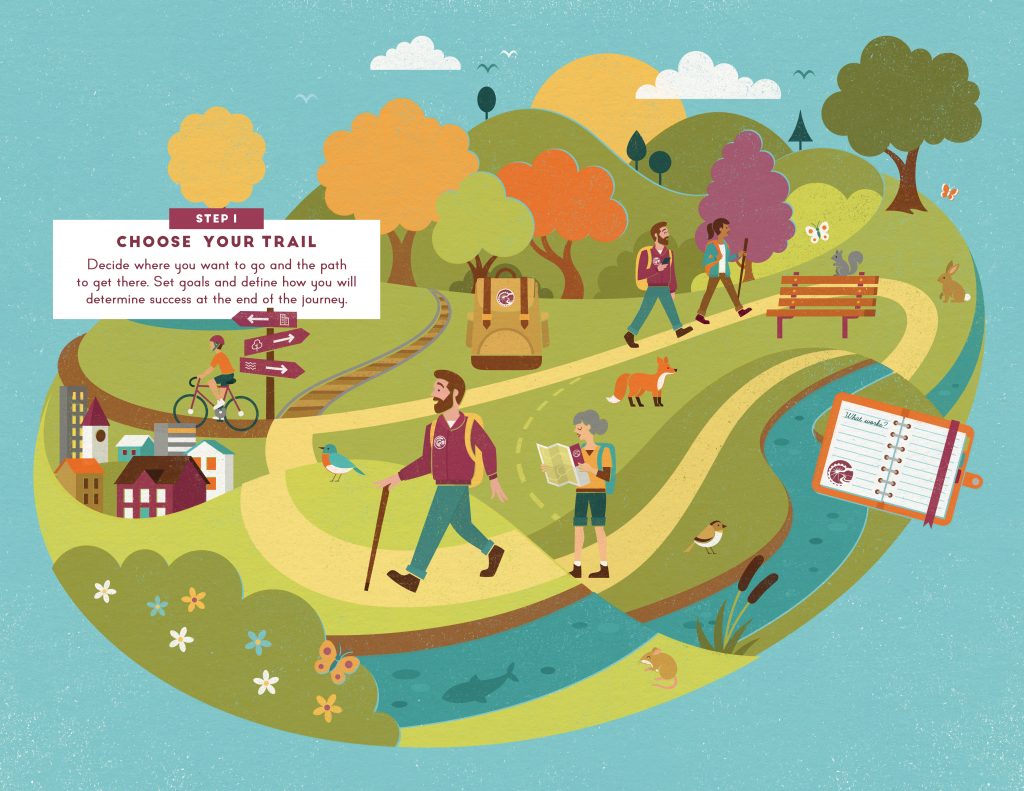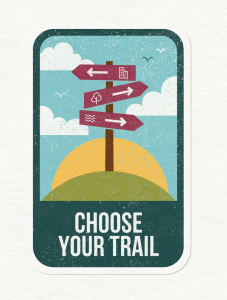Choose Your Trail


The first step of any journey is always the hardest, but most important step. Taking the time to plan out the whole process in the beginning is a critical step to creating a successful project. That is what this step seeks to do. We created a worksheet that you can use to go through this holistic data visioning step. Here are the important elements:

Think about the whole process
If this is a new program or project think about the entire process and how you envision the end user using the final result. Too often people get started and jump right into the planning or doing stages without thinking about the big picture and how this will fit in with other parts of your organization. If this is an existing program or project think about how it has been working and what ways you could improve it. So questions that are useful to ask in the beginning:
- How does this fit in with our existing programs/projects?
- Can we learn from or improve on similar types of programs/projects?
- How will the end user experience or use this?
Who should be involved
Who are the involved parties? Is this only internal to your organization or will you be working with staff from multiple organizations? Having the key players involved from the very beginning at the visioning process will lead to a better final product. It also improves efficiency and helps to prevent those “I thought you knew” moments. It is better to start off with more inclusive group at the beginning and pair it back then start off with a closed group and than try to bring more people in half way through the project.
Set goals
Before you even start its important to set goals for the program or project. This allows for you to design the program or project in a way that increases the likelihood of achieving the goal. Often in this step you will release that different staff or different organizations have slightly different goals. Can you accommodate these different goals or do you need to come to a shared agreement on the same goals?
When setting a goals and important theory to practice is SMART goals. This is an exercise that can help you create better goals in the beginning. SMART stands for:
- Specific – What will be accomplished? What actions will you take?
- Measurable – What data will measure the goal? How will you collect this data?
- Achievable – Is the goal doable? Do you have access to the time, skills, and resources needed?
- Relevant – Why is this goal important? How does it align with your organization’s mission?
- Timely – What is the time frame for accomplishing the goal.
If you can answer these questions in a clear and understandable terms, your team is more likely to understand what it needs to do to achieve the goal.
Identify success metrics and key performance indicators
What does success look like? How will you measure it? What data will you need to do this? It’s important to think about this at the very start so as you are creating your plan you will build in the steps to collect the needed data.
Success metrics can come in different forms so it is important to identify them beforehand. Examples include:
- Quantifiable: Number of participants, sales, number of products created, etc.
- Qualitative: Stories from participants, photos, social media posts, etc.
Key performance indicators (KPIs) are the critical data points that you want to track from the project. KPIs can be collected on the inputs, outputs, and/or outcomes of a project. In the visioning and planning process you and your team should clearly identify them. The KPIs should be specific, have a clear methodology of how they are collected and created, and be able to be updated and tracked over time. Often these will become long term data points that you use to track a program over time. Examples of KPIs include:
- Measuring how much staff time went into the project
- Total cost to produce the project
- Average number of participants per program
- Count of products produced
- Measurement of how your work impacted or changed the conditions
- Results from user surveys
Now that you have chosen your trail, you and your team can move to the next step and gear up!










